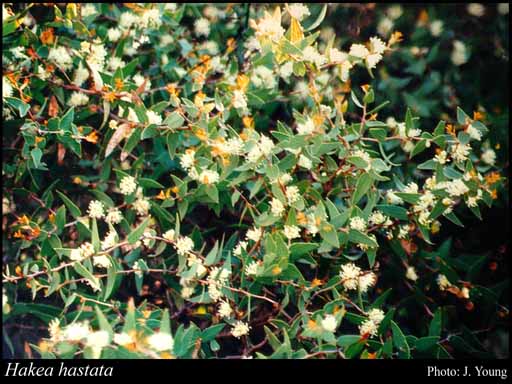- Reference
- Fl.Australia 17B:394 (1999)
- Conservation Code
- Not threatened
- Naturalised Status
- Native to Western Australia
- Name Status
- Current
Open, erect shrub, 1.5-3 m high. Fl. white, Sep to Oct. Yellow-grey sand, yellow clay, red-brown sandy loam, clay, gravel, laterite. Hills.

Scientific Description
Shrubs, 1.5-3 m high; branchlets hairy. Leaves alternate, 20-35(-47) mm long, 8-14(-24) mm wide, glabrous; lamina flat, clearly widest below the middle, entire. Inflorescences axillary, cream; pedicels 2-3 mm long. Perianth 2-3 mm long, glabrous; ovary glabrous; pistil 3-4 mm long, pollen presenter conical, style glabrous. Follicles 16-20 mm long, 9-12 mm wide, corky tetrahedral projections (on external surfaces of fruit) absent; seed 11-14 mm long (including wing), 5-6 mm wide, the wing discontinuous, marginal, extending down one lateral side only. Flowers in September or October. Occurs in the South-west (SW) Botanical Province(s), in the Avon Wheatbelt (AW), Mallee (MAL) or Esperance Plains (ESP) IBRA subregion(s).
Distribution
- IBRA Regions
- Avon Wheatbelt, Esperance Plains, Mallee.
- IBRA Subregions
- Fitzgerald, Katanning, Western Mallee.
- Local Government Areas (LGAs)
- Albany, Cuballing, Dumbleyung, Gnowangerup, Katanning, Kent, Kulin, Lake Grace, Narrogin, Pingelly, Wagin, Wickepin, Woodanilling.